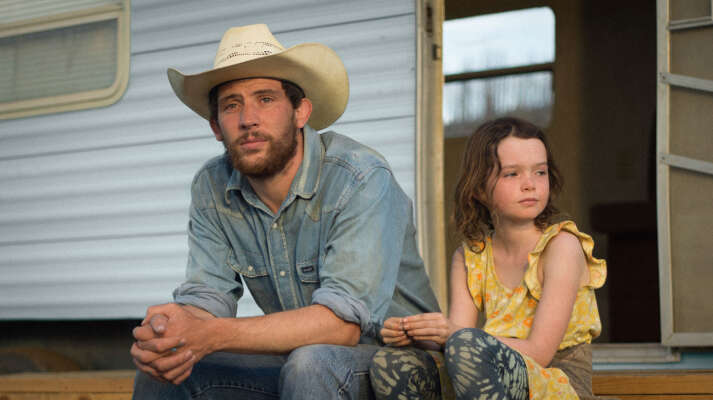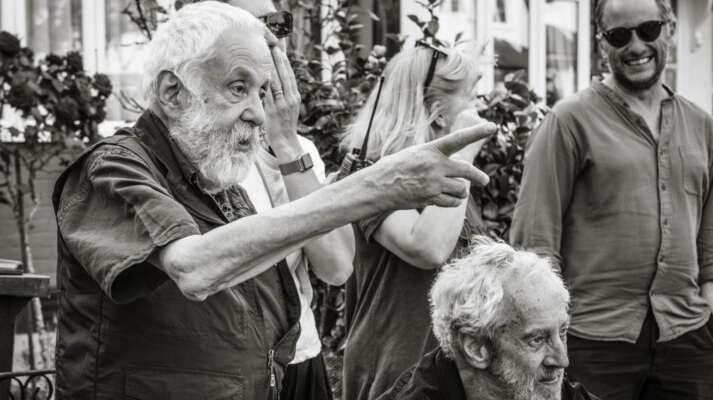The Power of Love
Notable couples, from the Curies to the Cavendishes, whose love enabled them to do extraordinary things
The Power of Love
Written by Peter Bowen
Andy Serkis’ Breathe brings to the screen one of the most extraordinary love stories of recent times. The charismatic couple Robin Cavendish (Andrew Garfield) and his wife Diana (Claire Foy) had their lives all before them––great friends, a promising career, and a child on the way. But when Robin contracted polio, rendering him all but paralyzed, everything changed. Diana’s love and determination, however, gave him the courage to go on to recreate his life. Working with friends, Robin and Diana completely changed what the world thought people with disabilities were capable of doing. When Robin and Diana’s son Jonathan Cavendish brought the story to Serkis, both men recognized that above all the film is about love. “It’s a story about the power of love in overcoming all the difficulties that Robin and Diana faced,” remarks Jonathan. But Serkis also connected to what that love was able to accomplish, how this was a tale “about people doing things no one had ever done before, and doing them in their own way.” In recognition of the Cavendishes’ inspiring story, we salute other remarkable couples whose love gave each other the power to accomplish extraordinary things.

Marie and Pierre Curie had chemistry
A laboratory set the stage for Maria Skłodowska and Pierre Curie to meet, fall in love, and make scientific history. When Marie, a 25-year-old post-grad from Poland, was looking for lab space in Pairs, a friend hooked her up with Pierre, a 35-year-old instructor. Within a year, Pierre proposed to Marie and by 1895 the two were married. While working in the same lab, the two initially were focused on different scientific challenges. Pierre explored crystals and magnetism; Marie continued her study of radiation. By 1898, however, Pierre joined forces with his wife to study radioactive metals. At home, the two lived a quiet family life, raising two daughters. At work, they made extraordinary scientific discoveries and gained international acclaim, including winning the 1903 Nobel Prize in Physics. But everything changed in 1906 when Pierre died after being run over by a truck on a rainy Parisian street. Despite—perhaps even because of––her loss, Marie persevered. She became the first female professor at the University of Paris, won a second Nobel Prize in 1911––this time for Chemistry––and inspired generations of male and female scientists. But she never forgot Pierre. Shortly after his death, Marie wrote, “I am working in the laboratory all day long, it is all I can do; I am better off there than anywhere else. I conceive of nothing any more that could give me personal joy, except perhaps scientific work.”

Franklin Delano and Eleanor Roosevelt forged a powerful political alliance
For more than two decades, the political and personal partnership of Franklin Delano and Eleanor Roosevelt changed the social fabric of America. Strangely, even though the two moved in similar circles and were distantly related, they didn’t actually meet until 1902. Franklin, a 20-year-student, approached the 17-year-old Eleanor on a train in the Hudson Valley, and soon the two were inseparable. Three years later, they were married. President Theodore Roosevelt, who was also Eleanor’s uncle, wrote Franklin, “You and Eleanor are true and brave, and I believe you love each other unselfishly; and golden years open before you." But their halcyon days were also filled with challenges. Eleanor stood by Franklin after he contracted polio in 1921, and worked with him to bring hope to America during its worst economic depression and to unite a nation during World War II. While Franklin may have not always been faithful to Eleanor, he remained true to their shared ideals. “Both FDR and Eleanor had other intimate companions, other loves…Their bond was strong enough to withstand betrayal, polio, and the White House,” wrote Hazel Rowley in Franklin and Eleanor: An Extraordinary Marriage.

Gertrude Stein and Alice B. Toklas created a home for a Lost Generation
Alice B. Toklas could never forget the day in 1907 when she met the woman with whom she would share her life: “It was Gertrude Stein who held my complete attention, as she did for all the many years I knew her.” Stein originally hired Toklas as a secretary, but after she moved into the house that Stein shared with her brother Leo, it was clear that she had become something much more than that. While many of the artists, from Pablo Picasso to Ernest Hemingway, who visited 27 rue de Fleurus came to pay homage to the sage Stein, Toklas conducted a second soiree for wives and lovers in the next room. Stein whimsically signaled Toklas’ significance by writing the story of her life, The Autobiography of Alice B. Toklas, in the voice of her lover. Toklas’ actual memoir, the 1963 What Is Remembered, ends at Stein’s death in 1946, even though the author would go on living another 19 years.

Diego Rivera and Frida Kahlo, comrades in arms and art
In 1927, Diego Rivera, a 36-year-old muralist who’d been hired to create his first nationally sponsored work Creation, could not stop staring at the young woman watching him from below. “Her hair was long; dark and thick eyebrows met above her nose,” wrote Rivera in My Art, My Life. “They seemed like the wings of blackbird, their black arches framing two extraordinary brown eyes.” This vision turned out to be Frida Kahlo, the person whom Rivera wrote, “had already become the most important fact in my life. And she would continue to be, up to the moment she died.” Kahlo, a young artist trying to find her voice, found a mentor, supporter, and lover in Rivera. While the romantic passion would flare up and die out multiple times, their support and love for each other never faltered. Rivera promoted Kahlo’s work early on, and the two became life-long comrades in progressive politics.

Coretta Scott and Martin Luther King Jr. shared a dream
After his first date with Coretta Scott in 1952, Martin Luther King Jr. reportedly told her, “The four things that I look for in a wife are character, personality, intelligence and beauty. And you have them all." The two married a year later, forging a partnership that helped change the world. While her husband became one of the most recognizable faces of the Civil Rights Movement, Coretta saw herself as a partner from the beginning, even insisting that they remove the line about obeying your husband from the wedding vows. For the next two decades, the two walked hand-in-hand on the long march towards civil rights. Even after Martin was assassinated in 1968, Coretta kept his dream alive, working tirelessly to promote human rights everywhere.

Yves Saint Laurent and Pierre Bergé reinvented style
While the name Yves Saint Laurent is now a trademark of high fashion and French style, the designer’s empire was built equally with the hard work and genius of his partner Pierre Bergé. When they met in 1958, Saint Laurent was a rising fashion star who had just been appointed head designer at Dior. Bergé saw even bigger things in his slender, new boyfriend’s future. Within a few years, Bergé turned Yves Saint Laurent––both the designer and the brand––into a fashion behemoth, ruling both the runway and ready-to-wear market. The pair, with houses in Morocco and Normandy filled with contemporary art, antique furniture, and A-list celebrities, became icons of style. “Everything I didn’t have, he had,” Saint Laurent said of his partner. “His strength meant I could rest on him when I was out of breath.” While their romantic attachment waned in later years, their commitment didn’t. They were joined in a civil union in 2008, right before Saint Laurent’s death, in order to preserve the fate of considerable art and furniture collection. At Saint Laurent’s funeral, Bergé said, “The years passed. Oh, how they passed quickly. The divorce was inevitable, but the love never stopped.”


